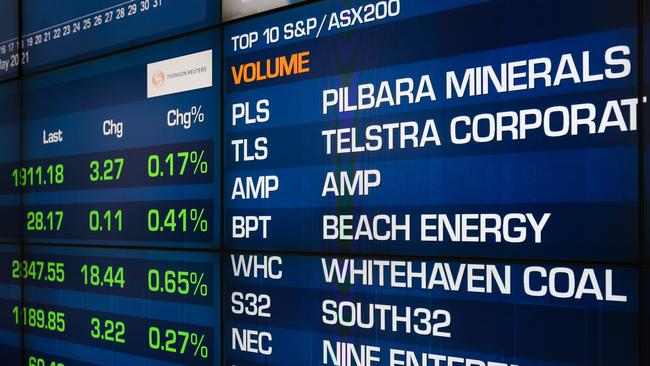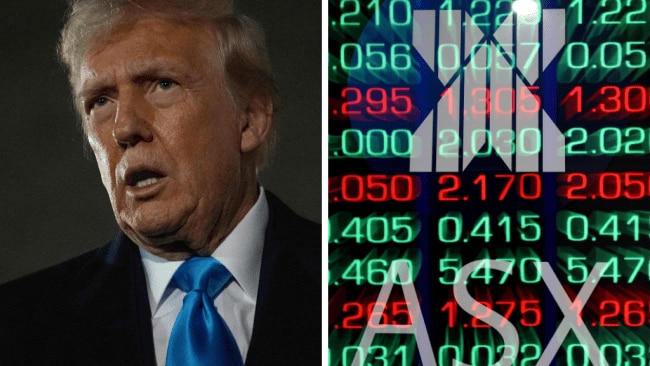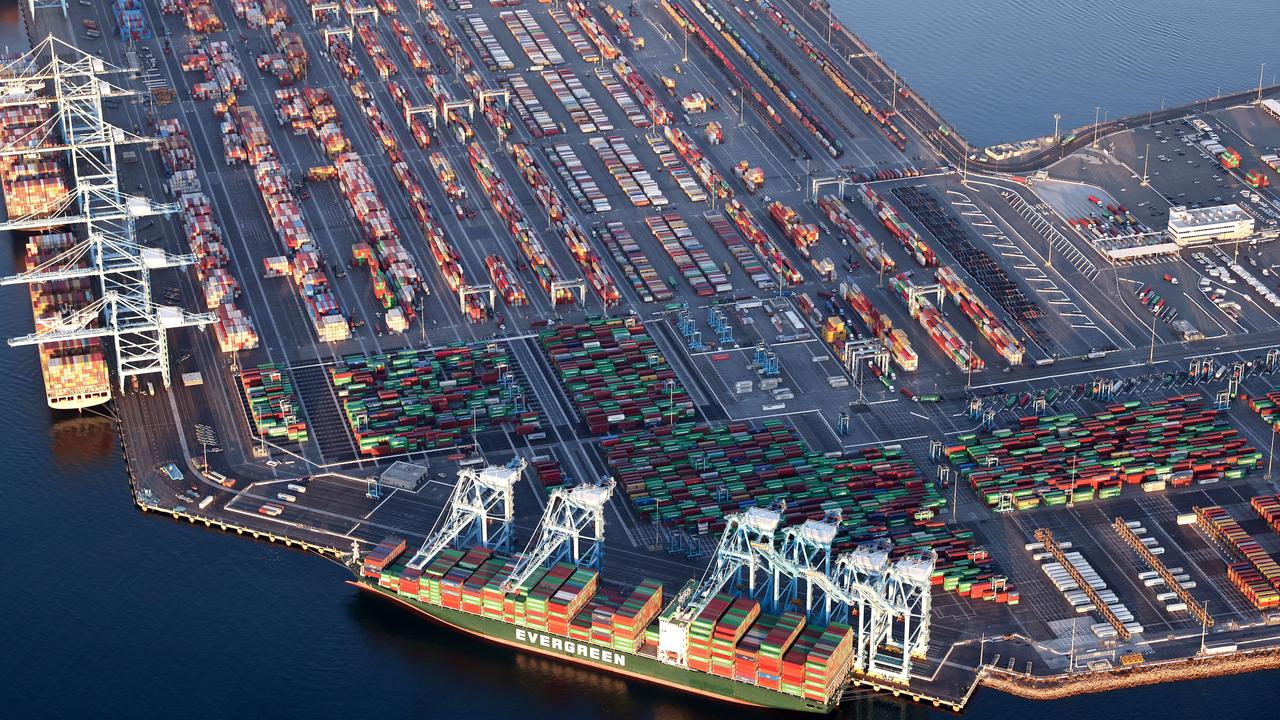ASX 200 record defies Victorian Covid lockdown
Australia’s share market defied a one-week extension of Victoria’s Covid lockdown, surging to a fresh record high as commodity price gains and strong GDP fuelled a rise in cyclical sectors.

Australia’s share market defied a one-week extension of Victoria’s Covid lockdown, surging to a fresh record high as commodity price gains and strong economic data fuelled a rise in stocks linked to economic recovery.
The S&P/ASX 200 closed up 75 points or 1.1 per cent at 7217.8 points – its highest daily close on record – after rising steadily to a fresh all-time high of 7218.9.
Companies with earnings exposed to Victoria’s lockdown – extended for a week on Wednesday simply looked through the potential $2 billion hit to the state’s economy.
Qantas added 1.7 per cent, Sydney Airport rose 2.7 per cent and Vicinity Centres rose 3.2 per cent, Transurban rose 1.5 per cent while gaming Crown Resorts major ended slightly down despite extending the closure of its biggest casino.
Record highs for the local bourse came as global markets remained buoyant, with both the MSCI All Country World and Developed Markets indexes hitting record highs on Tuesday.
It also came as a surge in commodity prices boosted cyclical sectors, particularly resources.
West Texas crude oil hit a 2 a-year high of $US68.87 a barrel as Saudi Arabia downplayed the need for further supply increases even as the International Energy Agency warned of a potential supply shortage in the second half, and spot iron ore regained $US200 a tonne after China’s crackdown on speculators sparked a sharp pullback from a record high near $230 in recent weeks.
The latest gains take the S&P/ASX 200 up 9.6 per cent so far this year and up 23.7 per cent over the past 12 months.
The surge came as investing legend Jeremy Grantham cautioned on the outlook for “bubbly” markets.
Speaking at the Morningstar Investment Conference on Wednesday, the co-founder and chief investment strategist of GMO labelled US equities “heroically overvalued”.
“We’ve turned the pressure up and up: more money, more moral hazard, and here we are at the peak and it won’t take bad news or a bad economy to bring this market down,” he said.
“It will take a perfectly good economy and perfectly optimistic outlook but a little less (optimistic) than it was a week ago, a month ago,” he warned.
Resources stocks were among the top performers with BHP up 3.1 per cent, Woodside Petroleum up 4.6 per cent, Santos up 6.5 per cent, Rio Tinto up 1.9 per cent and Fortescue Metals up 2 per cent.
But while the major banks lagged behind, there was also considerable strength in domestic cyclicals.
It came as March quarter national accounts showed that the domestic economy had a strong head of steam before the removal of support from the JobKeeper wages subsidy and the HomeBuilder first home owner incentive at the end of March.
The economy grew 1.8 per cent versus 1.5 per cent expected by economists for the March quarter compared to the December quarter, and 1.1 per cent on a year ago versus 0.6 per cent expected.
“Despite Covid shutdowns last year, the economy has rebounded to now above pre-pandemic levels,” said Bell Potter’s head of institutional sales and trading, Richard Coppleson.
But with the market rising gradually amid a relative lack of selling, he said it seemed as though some institutional investors were deploying cash into the market at the start of the month and the lack of selling in the face of that buying exaggerated the rise in the market.
“It was not a convincing rally on strong buying,” Mr Coppleson said. “Had value today been $7.5bn or more that would be a big sign.”
“But this can just as easily reverse…I’m not chasing this.”
But CommSec raised its end-2021 target for the ASX 200 to 7350 points.
CommSec chief economist Craig James noted that the domestic economy has exceeded its pre-pandemic high after the fastest recovery from recession in 45 years.
“The economy is responding as hoped to unprecedented fiscal and monetary stimulus,” he said.
“The stimulus continues and further solid economic growth can be expected.”
“Company revenues will continue to lift and so should profits, provided that firms have tight control of costs. Higher earnings are expected to translate to higher share prices.”
After the close of trading the Reserve Bank said Governor Philip Lowe will deliver a separate speech at 4pm on the day of the July 6 board meeting, titled “Today’s Monetary Policy Decision”.
The revelation underscores the importance of the July board meeting for unconventional policy.
On Tuesday the RBA repeated that it will consider at its July meeting whether to retain the April 2024 bond as the target bond for its three-year yield target or shift to the November 2024 bond, albeit it’s not considering a change to the target of 10 basis points, and doesn’t expect to lift its overnight cash rate until “2024 at the earliest.”
The RBA will also consider future bond purchases following the completion of the second $100 billion of purchases under the government bond purchase program in September.



